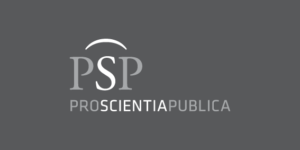Effects of a Constructivist Learning Environment on Developing Writing Skills in EFL Students
DOI:
https://doi.org/10.15503/jecs2025.3.607.624Keywords:
cognitive constructivism, new input, old knowledge, social constructivism, second language, writing skillsAbstract
Aim. This research investigates the effectiveness of constructivist-based learning in developing the writing skills of EFL students.
Methods. A sample of 60 second-year students from the Department of English Language at “Aleksander Moisiu” University was selected. The sample was divided into two groups, an experimental group (n=30) and a control group (n=30), on the basis of English proficiency levels. The instruments used for this study include an EFL writing skills test (pre- and posttest) and the Writing Quality Scale (Stuart and Barnett, 2024) for scoring the written essays. The control group received instruction through a traditional teaching method, whereas the experimental group was taught in a constructivist learning environment. The analysis focused on the integration of new linguistic input into students’ writing tasks, assessing the lexical, grammatical, and textual elements they utilised to enhance their writing techniques.
Results. A comparison of the scores between the two groups revealed statistically significant differences in favour of the experimental group in terms of EFL writing skills. The findings suggest that students' writing skills improved over time with the implementation of the constructivist approach.
Conclusion. This study views the constructivist approach as a successful framework for teaching writing skills. However, the study’s limitations should be addressed, and other areas of learning should be explored to further verify the positive effects of constructivism in language education.
Downloads
References
Akkus, A., & Doymuş, K. (2022). Effect of subject jigsaw and reading writing presentation techniques on academic achievement of 6th grade students. Journal of Turkish Science Education, 19(2), 496-510. https://doi.org/10.36681/tused.2022.133
Applefield, J. M., Huber, R., & Moallem, M. (2000). Constructivism in theory and practice: Toward a better understanding. The High School Journal, 84(2), 35–53. http://www.jstor.org/stable/40364404
Arikan, A. (2006). The value of reflection in writing courses in ELT preservice teacher education programs. The Asian EFL Journal, 16(1), 1-16. https://eric.ed.gov/?id=ED506219
Ayaz, M. F., & Şekerci, H. (2015). The effects of the constructivist learning approach on students' academic achievement: A meta-analysis study. The Turkish Online Journal of Educational Technology, 14(4), 143-156. https://files.eric.ed.gov/fulltext/EJ1077612.pdf
Beach, G. M. (2007). An examination of factors contributing to critical thinking and student interest in an online college-level art criticism course [Doctoral dissertation, University of North Texas]. LearnTechLib. https://www.learntechlib.org/p/126095/
Bissoonauth-Bedford, A., & Stace, R. (2015). Building a writing community through learning of French. Journal of University Teaching & Learning Practice, 12(2). https://doi.org/10.53761/1.12.2.7
Brownstein, B. (2001). Collaboration: The foundation of learning in the future. Education 122(2), 240-247.
Cohen, J. (1988). Statistical power analysis for the behavioral sciences. Routledge Academic. https://doi.org/10.4324/9780203771587
Cooper, R. (2007). An investigation into constructivism within an outcome-based curriculum. Issues in Educational Research, 17(1), 15-39. http://www.iier.org.au/iier17/cooper.html
Derkhachadourian, L. (2019). PowerQuest: Scaffolding the Lebanese EFL university students’ writing in a public speaking class. International Journal of Linguistics, Literature and Translation, 2(4), 12-19. https://eric.ed.gov/?id=ED597369
Eigbeonan, A. B. (2013). Effective constructivism for the arch-design studio. International Journal of Architecture and Urban Development, 3(4), 5-12. https://www.sid.ir/FileServer/JE/1036020131001.pdf
Ernst, J. A., & Monroe, M. (2004). The effects of environment-based education on students' critical thinking skills and disposition toward critical thinking. Environmental Education Research, 10(4), 507-522. https://doi.org/10.1080/1350462042000291038
Facione, P. A. (2011). Critical thinking: What it is and why it counts. Insight Assessment, 1(1), 1-23. https://www.law.uh.edu/blakely/advocacy-survey/Critical%20Thinking%20Skills.pdf
Fahady, S. S. (2019). Impact of using a constructivism strategy to enhance EFL university students’ writing skills. Opcion, 35(19), 2469-2479. https://tinyurl.com/34tsd26r
Gibbons, P. (2015). Scaffolding language, scaffolding learning. Teaching second language learners in the mainstream class- room (2nd edition). Heinemann.
Giridharan, B. (2012). Engendering constructivist learning in tertiary teaching. US‒China Education Review A, 8, 733-739. https://files.eric.ed.gov/fulltext/ED536452.pdf
Huang, C. K., Lin, C. Y., & Villarreal, D. S. (2014, August 20-23). Contextual language learning: Educational potential and use of social networking technology in higher education. In S. Jager, L. Bradley, E. J. Meima, & S. Thouësny (Eds.), CALL design: Principles and practice; Proceedings of the 2014 EUROCALL Conference, Groningen, The Netherlands (pp. 158-164). https://doi.org/10.14705/rpnet.2014.000211
Irshad, S., Maan, M. F., Batool, H., & Hanif, A. (2021). Vygotsky’s zone of proximal development (ZPD): An evaluative tool of language learning and social development in early childhood education. Multicultural Education, 7(6), 234-242. http://ijdri.com/me/wp-content/uploads/2021/06/25.pdf
Jonassen, D. H. (1999). Designing constructivist learning environments. In C. M. Reigeluth, (Ed.), Instructional-design theories and models: A new paradigm of instructional theory (vol. 2, pp. 215-239). Lawrence Erlbaum Associates.
Kamii, C., & Ewing, J. K. (1996). Basing teaching on Piaget’s constructivism. Childhood Education, 72(5), 260-264. https://doi.org/10.1080/00094056.1996.10521862
Kanselaar, G. (2002). Constructivism and socio-constructivism. Constructivism, 1-7. https://tinyurl.com/yemvhh7n
Kwan, Y. W., & Wong, A. F. L. (2015). Effects of the constructivist learning environment on students’ critical thinking ability: Cognitive and motivational variables as mediators. International Journal of Educational Research, 70, 68-79. https://doi.org/10.1016/j.ijer.2015.02.006
Leka, K., & Beshiri, D. (2024). School leaders’ and teachers’ perceptions of the feedback and evaluation system in Albania. International Journal of Education and Practice, 12(3), 1054-1067. https://doi.org/10.18488/61.v12i3.3823
Lentz, G. S., & Foncha, J. W. (2021). Lecturers' views on using blended learning as an intervention program for teaching English language academic writing to Cape Peninsula University of Technology (CPUT) first-year students. Journal of English as an International Language, 6(1), 77-92. https://files.eric.ed.gov/fulltext/EJ1328452.pdf
Marsh, S. M. (1998, April 13–17). Widening the lens of diversity: Motivating reflective journal writing [Conference presentation]. Annual Meeting of the American Educational Research Association, San Diego, CA, United States. https://files.eric.ed.gov/fulltext/ED418425.pdf
Mascolo, M. F., & Fischer, K. W. (2004). Constructivist theories. In B. Hopkins, R. G. Barre, G. F. Michel, & P. Rochat (Ed.), Cambridge encyclopedia of child development (pp. 49-63). Cambridge University Press. https://www.academia.edu/8906476/Constructivist_Theories
Maypole, J., & Davies, T. G. (2001). Students’ perception of constructivist learning in a community college American history survey course. Community College Review, 29(2), 54-79. http://dx.doi.org/10.1177/009155210102900205
Muho, A., & Taraj, G. (2022). Impact of formative assessment practices on student motivation for learning the English language. International Journal of Education and Practice, 10(1), 25–41. https://doi.org/10.18488/61.v10i1.2842
Mustafa, M., Selim, T., & Quora, A. A. S. (2022). A constructivism-based program to develop the writing skills of EFL preparatory stage students. Journal of The Faculty of Education-Mansoura University, 117, 1-52. https://shorturl.at/Fcb1Q
Nair, S. M., & Sanai, M. (2018). Effects of utilizing the STAD method (cooperative learning approach) in enhancing students’ descriptive writing skills. International Journal of Education and Practice, 6(4), 239-252. https://doi.org/10.18488/journal.61.2018.64.239.252
Naylor, S., & Keogh, B. (1999). Constructivism in the classroom: Theory into practice. Journal of Science Teacher Education, 10(2), 93-106. https://doi.org/10.1023/a:1009419914289
Piaget, J. (1952). The origins of intelligence in children. International University Press.
Piaget, J. (1957). Construction of reality in the child. Routledge and Kegan Paul.
Piaget, J. (1964). Part I: Cognitive development in children: Piaget development and learning. Journal of Research in Science Teaching, 2(3), 176-186.
Rumpagaporn, M. W., & Darmawan, I. G. N. (2007). Students’ critical thinking skills in Thai ICT schools. International Education Journal, 8(2), 125-132. https://files.eric.ed.gov/fulltext/EJ834154.pdf
Schunk, D. H. (2012). Learning theories: An educational perspective (6th ed.). Pearson.
Seçer, S. Y. E., & Yücel-Toy, B. (2020). Impact of writing course design based on the 5E learning model on writing skill instruction and development. International Online Journal of Education and Teaching, 7(3), 760-783. https://iojet.org/index.php/IOJET/article/view/841
Slavin, R. E. (2006). Educational psychology: Theory and practice (8th ed.). Allyn & Bacon Press.
Storch, N. (2005). Collaborative writing: Product, process, and students’ reflections. Journal of Second Language Writing, 14, 153-173. https://doi.org/10.1016/j.jslw.2005.05.002
Stuart, N., & Barnett, A. L. (2024). Writing Quality Scale (WQS)-HE version. Administration and scoring guide. Oxford Brookes University. https://doi.org/10.24384/sq3r-1m26
Sullivan, N., & Pratt, E. (1996). A comparative study of two ESL writing environments: A computer-assisted classroom and a traditional oral classroom. System, 24(4), 491-501. https://doi.org/10.1016/s0346-251x(96)00044-9
Taraj, G., & Jani, G. (2019). Increasing students’ participation in the English classroom: a case study. In B. Szele & O. Hoffmann (Eds.), Proceedings of the shaping the future through dialogue, quality, and education (pp. 62-68). https://www.mek.oszk.hu/24600/24663/24663.pdf#page=63
Valsiner, J., & van der Veer. R. (1999). The encoding of distance: The concept of the zone of proximal development and its interpretation. In R. R. Cocking & K. A. Renninger (Eds.) The development and meaning of psychological distance (pp. 35-62). Hillsdale. https://tinyurl.com/6j48rj2b
Vygotsky, L. S. (1978). Mind in society: The development of higher psychological processes. Harvard University Press.
Vygotsky, L. S. (1986). Thought and language. MIT Press.
Wadsworth, B. J. (2004). Piaget's theory of cognitive and affective development. Pearson Allyn & Bacon: Boston.
Williams, R. L., Oliver, R., Allin, J. L., Winn, B., & Booher, C. S. (2003). Knowledge and critical thinking as course predictors and outcomes. Inquiry: Critical Thinking Across the Disciplines, 22(4), 57–63. https://doi.org/10.5840/inquiryctnews200322422
Wolff, D. (2003). Integrating language and content in the language classroom: Are transfer of knowledge and of language ensured? ASP, 41-42, 35-46. https://doi.org/10.4000/asp.1154
Wozniak, R. H. (1993). Co-constructive metatheory for psychology: Implications for an analysis of families as specific social contexts for development. In R. H. Wozniak & K. W. Fischer (Ed.), Development in context: Acting and thinking in specific environments (pp. 77-91). Erlbaum.
Zulela, M. S., & Rachmadtullah, R. (2019, January). Constructivism approach in learning to write narrative at elementary school. In 1st International Conference on Innovation in Education (ICoIE 2018) (pp. 287-290). Atlantis Press. https://doi.org/10.2991/icoie-18.2019.64
Downloads
Published
Issue
Section
License
Copyright (c) 2025 Gentjana Taraj, Anita Muho, Roman Králik

This work is licensed under a Creative Commons Attribution 4.0 International License.
CC-BY
Authors retain copyright and grant the journal right of first publication with the work simultaneously licensed under a Creative Commons Attribution License that allows others to share the work with an acknowledgement of the work's authorship and initial publication in this journal. All authors agree for publishing their email adresses, affiliations and short bio statements with their articles during the submission process.


